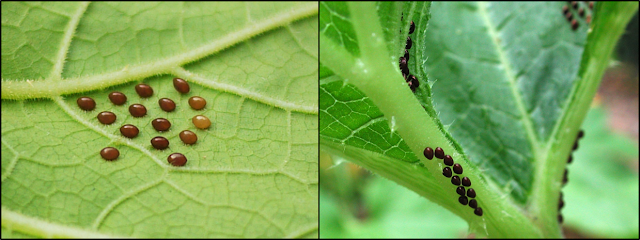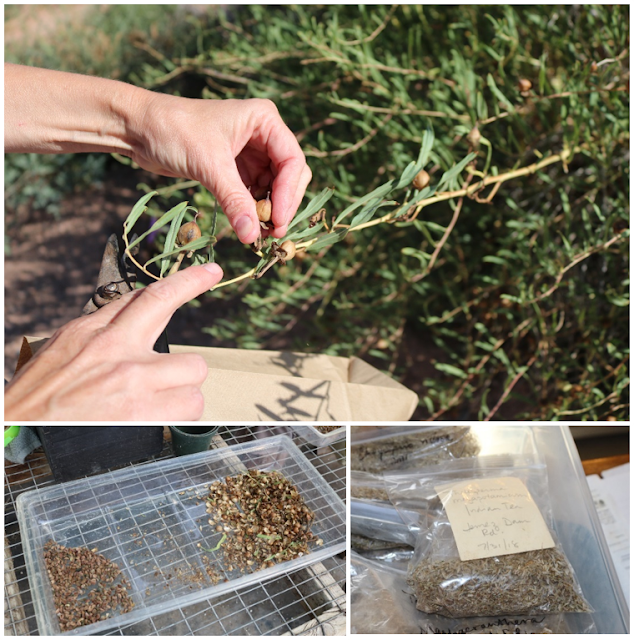Squash Bugs, Again

Southwest Yard & Garden Squash bug eggs on leaves and stems. Photo credits Bdm23, Wikimedia Commons (left) and Pollinator, Wikimedia Commons (right) Question: Back in April, I had questions about what turned out to be aphids on my peach trees. Now my melon plants are covered in squash bugs. Is there anything I can do to control them this late in the season? - Lorraine J., Los Lunas Answer: I wish I had better news for gardeners with the squash bug blues. Squash bugs are difficult to control, and even more so as the bugs mature because insecticides are a much less effective tool. Some people delay planting squash until July to avoid the squash bug, but this tactic is not foolproof. As many gardeners have reported this year, delayed planting seems to work some years, but not reliably. Dr. Carol Sutherland, NMSU Extension Entomology Specialist and NMDA Entomologist, has suggested that you take a hint from their name and “squash” the squash bugs. Look
